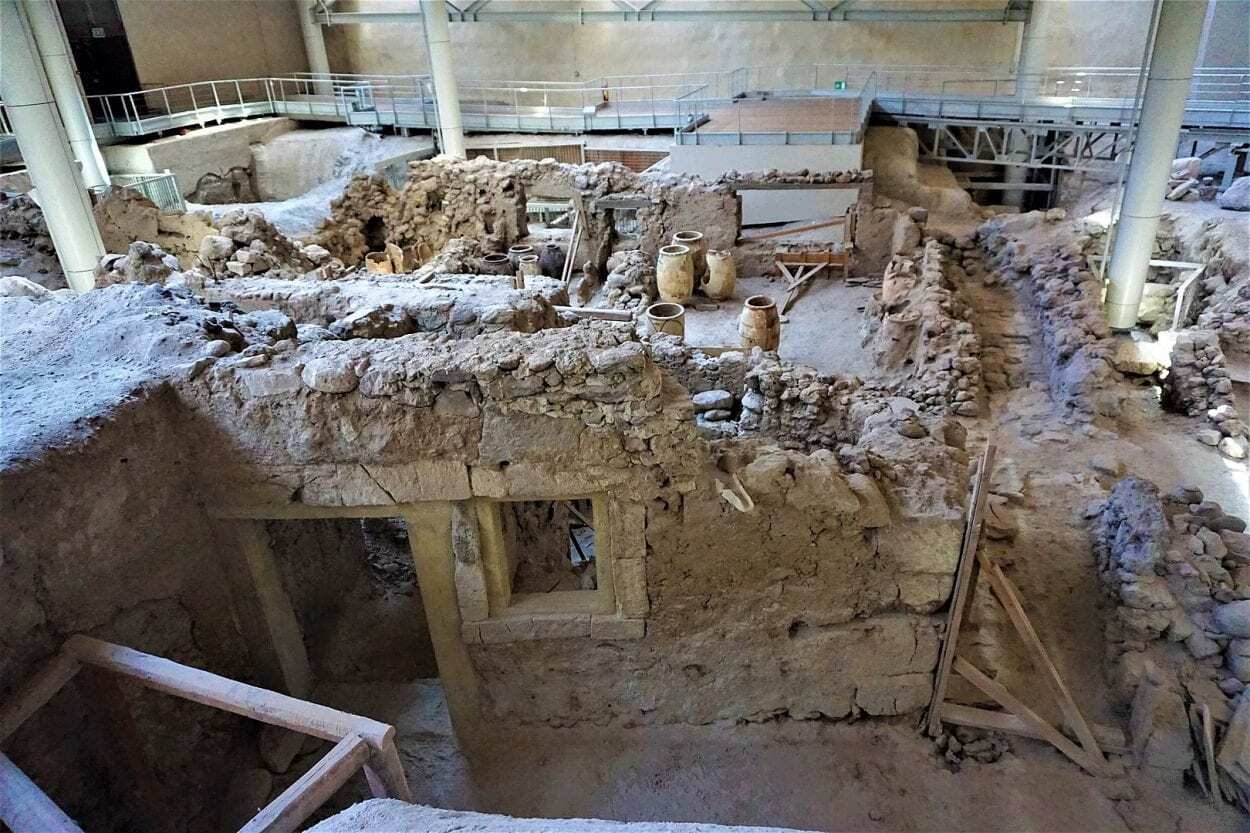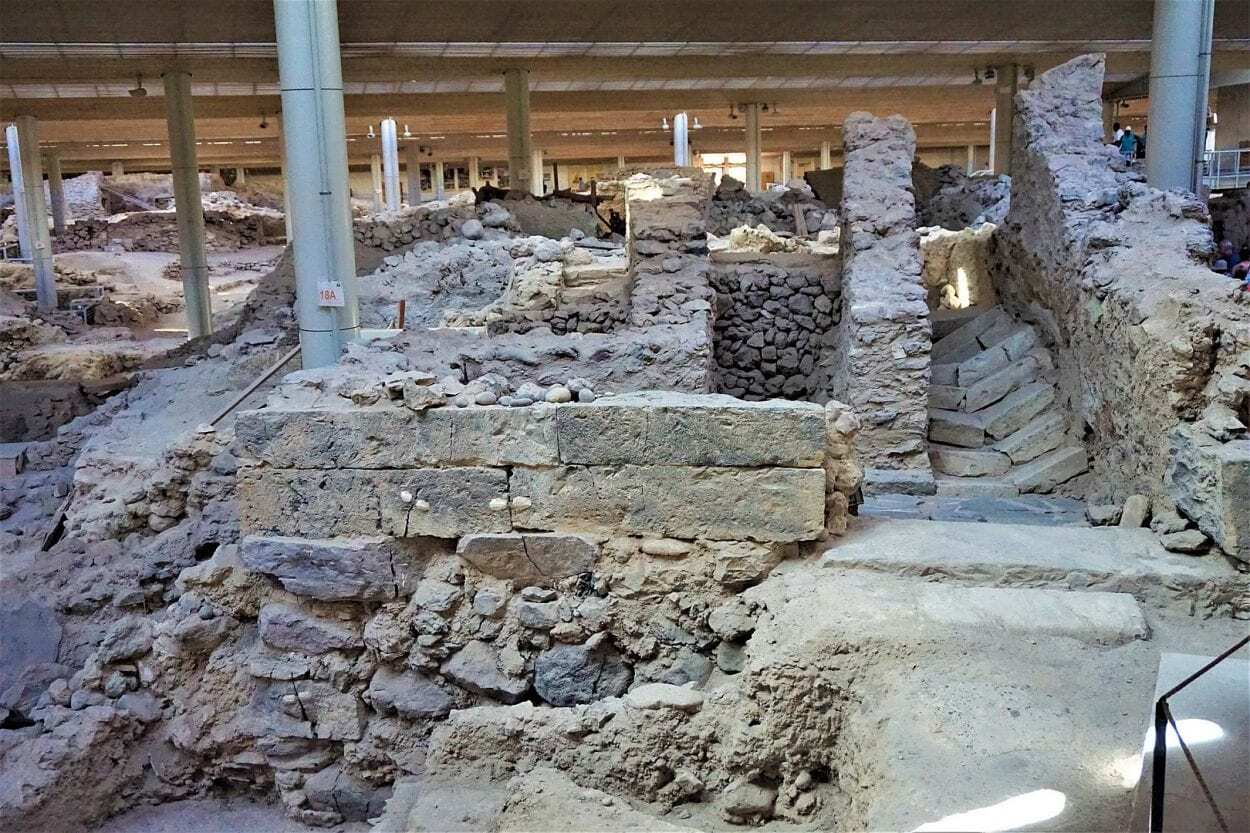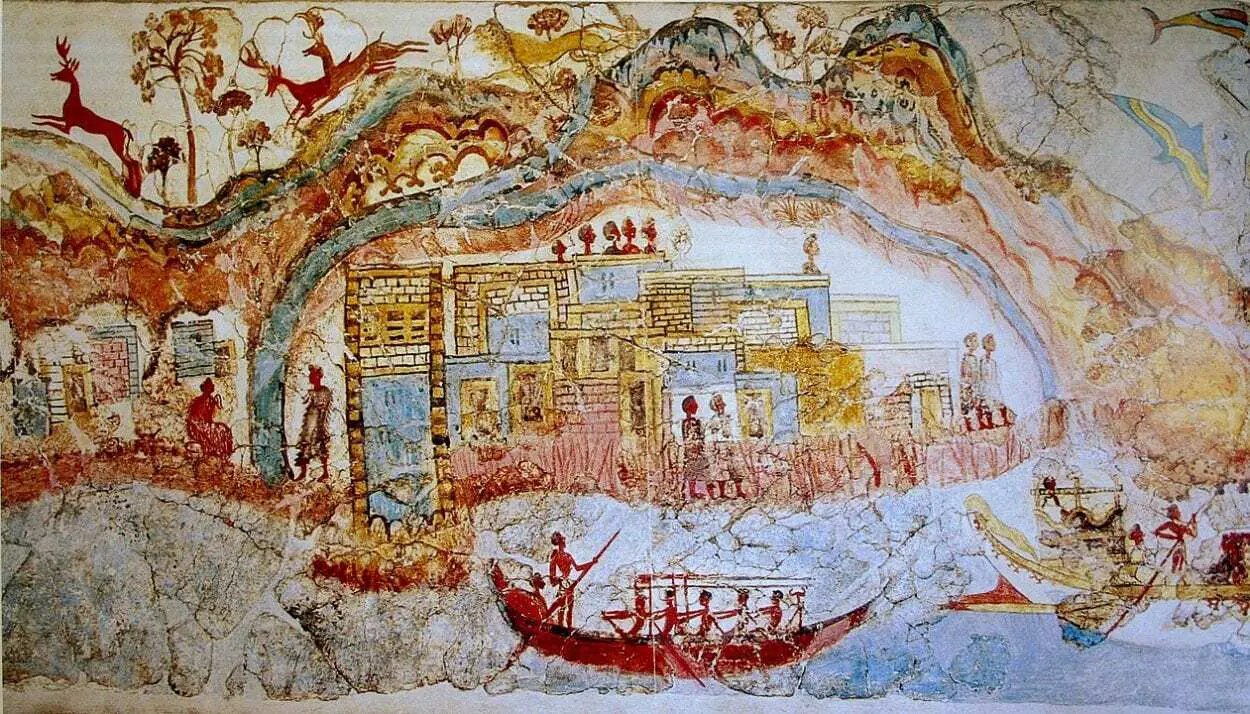Akrotiri is an archaeological site and a Cycladic Bronze Age town, located on the Greek island of Santorini (Thera) near the present-day village of Akrotiri (for which the prehistoric site is named).
The Cycladic civilisation refers to a Bronze Age culture that settled throughout the islands of the Cyclades in the Aegean Sea between 3200 – 1050 BC. The chronology of Cycladic civilisation is divided into three major sequences: Early, Middle and Late Cycladic, with the end of the Late Cycladic sequence (2000 BC) seeing a convergence between the Cycladic and Minoan civilisations.
The earliest evidence for habitation at Akrotiri suggests a small settlement that relied on agriculture and animal husbandry, which developed into a prosperous trading hub with Minoan influences (evident by inscriptions in Linear A, the writing system of the Minoans and Minoan monkeys in a fresco) during the 3rd millennium BC.

The town’s strategic position on the trade routes between Cyprus and Crete led to the town building a merchant fleet for exporting copper, saffron, wine, and other local products, which gave rise to an affluent way of life for the inhabitants.
Many dwellings consisted of multiple storeys, richly decorated with naturalistic frescoes, using an advanced sewerage system that suggests a sophisticated level of technology (architecturally speaking) that predates many contemporary civilisations.

The town was destroyed during the Theran eruption, also called the Minoan eruption sometime in the 16th century BC, that devastated the island and communities on nearby islands and the coast of Crete with related earthquakes and tsunamis.
The eruption deposited layers of pumice and ash, burying Akrotiri up to 7 metres in material, that preserved parts of the town relatively intact. This was followed by pyroclastic surges, lava flows, lahar floods, and co-ignimbrite ash-fall deposits, leaving Santorini uninhabited for centuries.

Archaeologists first excavated the ruins in 1867, with extensive ongoing excavations from 1967 revealing a triangular strip of the town containing a dozen free-standing houses positioned alongside a narrow street.
In recent decades, some historians have proposed that Akrotiri was the inspiration behind Plato’s story of Atlantis (as mentioned in his dialogues Timaeus and Critias), but this theory is strongly contested and has no archaeological evidence to merit the association.
Header Image – Ship Procession Fresco : Public Domain







